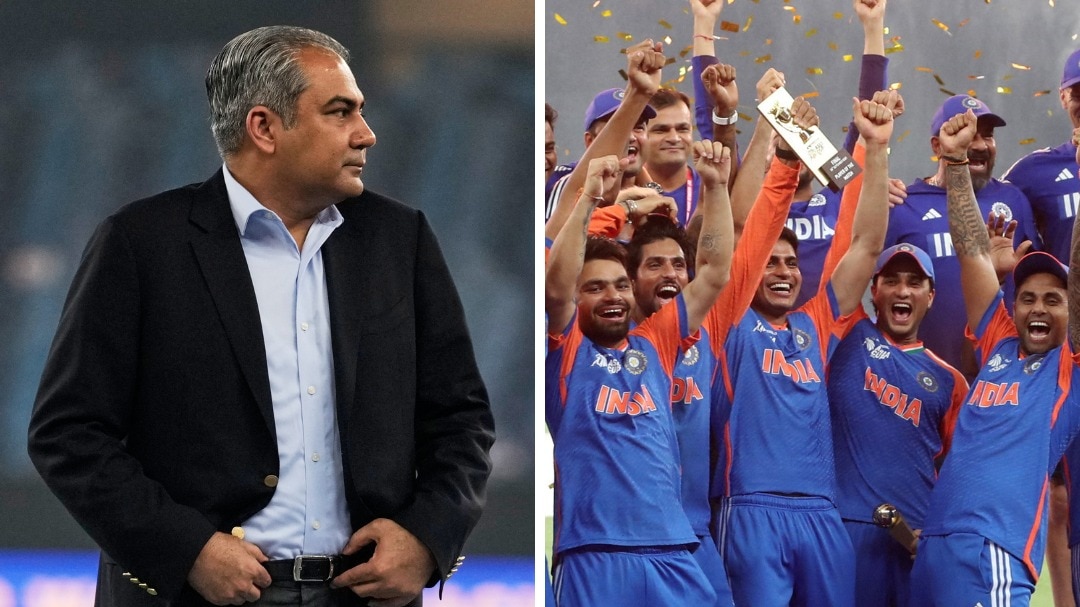To win a Test series in Australia, England need this weapon above all others

It was Douglas Jardine who said in Bodyline Autopsy, “Cricket is a game of skill, but it is also a game of war. You must find a way to win, or you are lost.”As the shadows shorten over the Australian spring, the 2025-26 Ashes series looms in Perth on November 21, a mere two weeks away. For England, under the audacious stewardship of Brendon McCullum and Ben Stokes, the mantra is clear: speed thrills. Their squad, boasting a cartel of express pacemen led by the enigmatic Jofra Archer and the thunderous Mark Wood, carries a deliberate echo of history.Yet, to understand this bold gambit, we must rewind to the summer of 1932-33, when Jardine faced a Hobson’s Choice – take the only option on offer or face certain defeat. Bodyline, that infamous tactic, was not born of malice but necessity, a desperate counter to Don Bradman’s otherworldly batting. It reminds us that cricket, for all its genteel veneer, can ignite passions that spill beyond civil norms, turning gentlemen into gladiators and crowds into cauldrons of fury.Jardine’s predicament was the stuff of captaincy nightmares. Bradman, the boy from Bowral, had just dismantled England in their own backyard during the 1930 Ashes, amassing 974 runs at an average of 139.14 – a record that still beggars belief. His 334 at Headingley was an opus of dominance, reducing England’s attack to rubble.Jardine, a steely, Oxford-educated amateur with a disdain for defeat, knew that accepting Bradman’s supremacy was tantamount to surrender. As England’s captain, his remit was unequivocal: find a way, within the laws, to curb this prolific scoring machine. But what options did he have? Conventional bowling had proven futile; spin was neutralised on Australia’s true pitches, and seamers like Bill Voce offered control, but not terror.Herein lies the essence of Jardine’s Hobson’s Choice – the illusion of alternatives masking a singular path. He turned to “fast leg theory”, a tactic not invented by him, but refined to lethal precision. Precedents abounded in the 1920s: Australian pacemen Jack Gregory and Ted McDonald had employed similar short-pitched barrages with packed leg-side fields during the 1920-21 Ashes, unsettling English batsmen on lively surfaces.Jardine, ever the tactician, drew from this example, consulting Nottinghamshire’s Arthur Carr and Percy Fender, who had trialled it domestically. His search for an attack was methodical: observing Bradman’s flinch against Harold Larwood’s bouncer at The Oval in 1930, Jardine exclaimed, “I’ve got it! He’s vulnerable!” Secret sessions in London honed the plan – short balls at the body, a ring of leg-side fielders to snare deflections. It was legal, innovative, and, crucially, the only sensible option against a batsman averaging over 100 in Tests.Critics vilified Jardine as unsportsmanlike, but he surmised that Bradman had to be stopped at any cost. Bodyline reduced Bradman’s average to 56.57 – still formidable, but mortal. The series’ flashpoints, like the Adelaide riot after Bert Oldfield’s skull fracture, evoked raw emotions: Australian crowds baying for blood, diplomatic cables flying between boards, threats of trade boycotts amid the Great Depression. Sport, in such moments, transcends civility, tapping into tribal loyalties that can fracture empires. Jardine the scapegoat, retired from Tests thereafter, but his tactic delivered a 4-1 victory. Without it, England would have been lambs to Bradman’s slaughter.This theme – pace as the great equaliser in Australia – is a common thread that runs through every triumph by a touring side Down Under since Bodyline. History is unequivocal: to win in these vast, sun-baked arenas, you need express-pace bowlers who can intimidate, extract bounce, and shatter partnerships on pitches that reward raw speed over subtle swing.England’s past victories have hinged on one or more express bowlers. Spin has played cameos, but pace was the protagonist, exploiting Australian conditions: Without it, touring sides wilt under home dominance – think Australia’s Lillee-Thomson terror in the 1970s or McGrath-Gillespie’s relentlessness in the 2000s.Now, to the present. McCullum and Stokes have done their homework. They have prioritised the fitness of Jofra Archer and Mark Wood, assembling a sextet of quicks – including Gus Atkinson, Brydon Carse, Matthew Potts, and Josh Tongue – to launch an assault. “We need that cartel fit and firing,” McCullum declared, echoing Jardine’s resolve. Archer’s X-factor and Wood’s 145kmh missiles are statements of intent. Both have had their preparation managed meticulously to peak in Perth. With only Shoaib Bashir as spinner, England put all their eggs in the speed basket, betting on a rotation of their pacemen to sustain pressure across five Tests.Australia lacks a Bradman, but curbing Steve Smith, Travis Head, and Marnus Labuschagne to modest outputs will be pivotal. Khawaja’s opening partner hasn’t yet been anointed, but the selectors appear to be favouring Labuschagne, to get their best team balance. Whoever opens will be critical to Australia’s success. If England’s attack fires and dismantles Australia’s batting order, the McCullum-Stokes masterplan will have them join the list of successful English leaders in Australia.On the surface, England appear a settled outfit, but I am not so sure: Zak Crawley and Ben Duckett are aggressive openers but new to Australian conditions, so the bounce will challenge them. Crawley is tall and tends to stand up on the ball to drive and nicks off frequently. The extra bounce in Australia will trouble him. Duckett continues to surprise. The ‘Bazball’ era has brought the best out of him, but will he be able to pull it off on Australia’s demanding pitches and larger grounds? Ollie Pope’s position always seems to be under question, so he needs to find form quickly or he will be challenged for the No.3 position by the promising, though untested, Jacob Bethell.Joe Root is a great player, but must score big runs if England is to win. Harry Brook is a player of prodigious talent, averaging 62.15 in Tests. He is a comet streaking across world cricket. Jamie Smith is another precocious batting talent. Though found out by the moving ball in NZ, he was batting out of position as an opener on that white-ball tour. He will revert to the middle order for The Ashes and his middle order contributions are imperative for competitive England scores.Stokes is a fantastic cricketer. He always makes his share of runs and, if he is fit after his shoulder problems, will bowl some very important overs. He was England’s best strike bowler against India in the recent summer. Like Cummins, he can almost will himself to take a wicket when needed. His all-round abilities give his team a much more balanced look than the Australian team, which lacks Cummins’ incisive bowling, lower order batting and calm leadership.LoadingThis series will be a litmus test for ‘Bazball 2.0’, which made an appearance during the India series. England seemed prepared to bat with discipline through the tough periods of that series: something which was missing from Bazball’s first iteration. Their incendiary style might work on the small grounds in England on pitches prepared to be as flat as one-day pitches, but it won’t be as easy to throw caution to the wind on the bigger grounds and more bowler-friendly pitches here.













